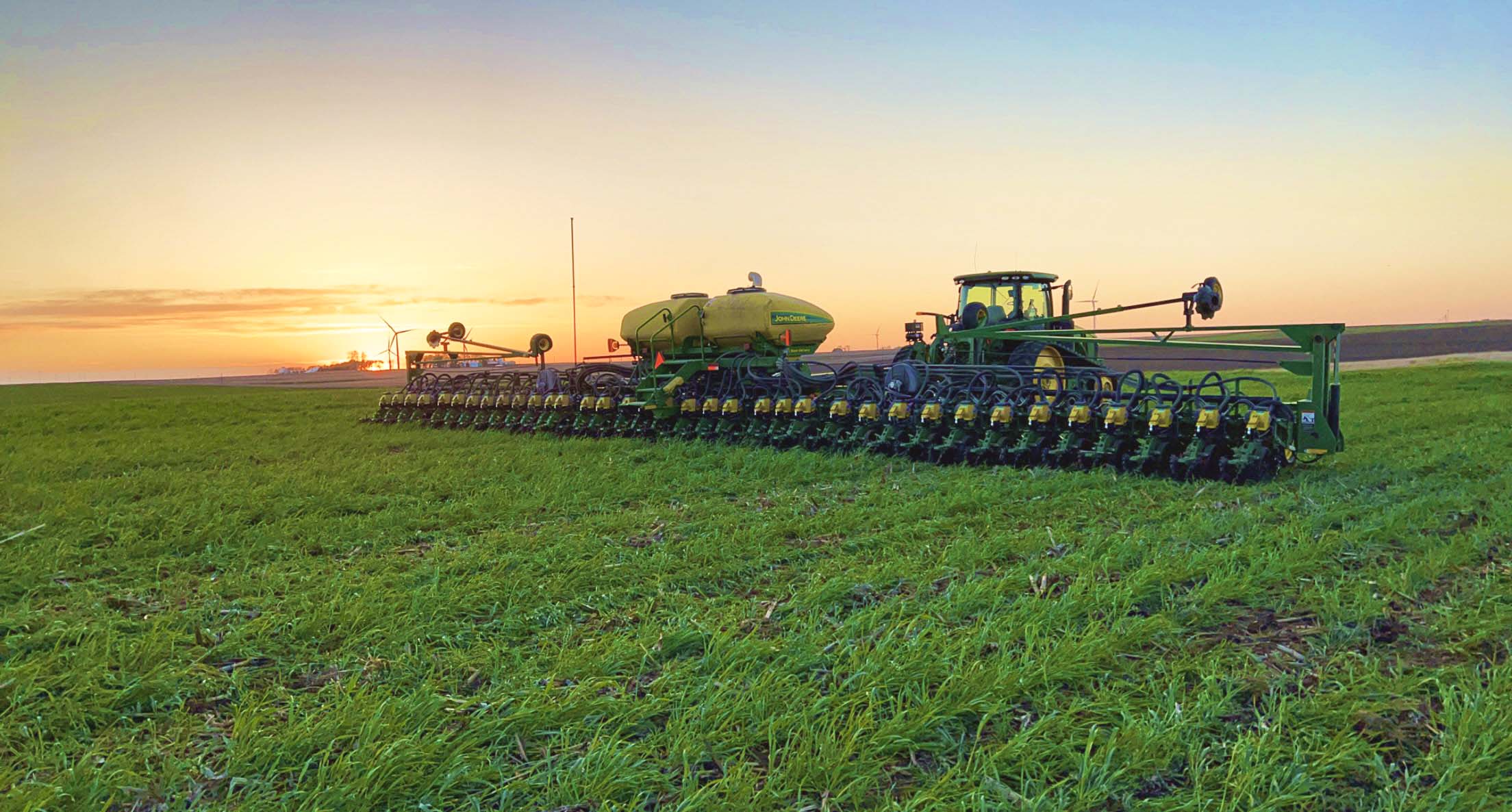
(Submitted Photo)
Five conservation myths debunked
March 11, 2024 | Kriss Nelson
Myths are often cited as a rationale behind a farmer’s choice not to adopt conservation agriculture practices. Backed by data and experience, Iowa Soybean Association (ISA) experts and farmers are dispelling those myths.
Myth 1: Alfalfa has a negative effect on water quality
There has been a misunderstanding that the perennial forage crop alfalfa is worse for water quality in terms of nitrate leaching when compared to corn and soybeans.
“There is no evidence to support this myth,” says Tony Seeman, ISA’s water lab service manager. “Alfalfa can be as profitable as conventional crops when added to a rotation because you reduce the number of inputs, including herbicides and fertilizers you are applying when you raise alfalfa. You could add alfalfa to improve water quality while not losing profit. It is a low-input system that could work and help diversify your farm.”
This scenario could work in an extended rotation, which, according to Iowa State University, is a rotation of corn, soybean and two to three years of alfalfa or legume-grass mixtures managed for hay harvest. Extended rotations reduce the application and loss of both nitrate-nitrogen and phosphorus.
According to the science assessment done as part of the Iowa Nutrient Reduction Strategy, there is an average 42% reduction in nitrogen loss from an extended rotation using at least two years of alfalfa in a four-to-five-year rotation with corn and soybeans.
The bottom line is a perennial cover, whether alfalfa, pasture or having land dedicated to CRP, results in low nitrates leaching the field.
“Just having a perennial cover does a lot of good for helping to keep more nutrients in the ground,” says Rosie Roberts, ISA technical insights manager.
Myth 2: Golf courses are a significant source of nitrate runoff, not farms
Fingers often point to golf courses as a large contributor to poor water quality because of nutrient runoff.
According to a study funded by the Iowa Nutrient Research Center and carried out by the Iowa Geological Survey, golf courses and residential lawns in Iowa account for 2% of the nitrogen and phosphorus applied at a lower rate than crop fields.
“Yes, golf courses use fertilizers,” says Seeman. “But they only fertilize certain areas such as greens and tee boxes, a low percentage of the land a golf course takes up.”
Typically, a golf course uses 87-120 pounds per acre of fertilizer on a perennial ground cover that is not fallow most of the year.
“This myth is busted. That amount of fertilizer is not intensive, and the number of golf courses in Iowa does not equal the number of acres put into cropland,” says Seeman. “You could stop fertilizing every golf course in Iowa, and you might reduce the nitrate export by less than 1%.”
Myth 3: Using cover crops contributes to phosphorus loss
The good outweighs the bad with this myth.
Results from a study done for the Great Lakes region have shown a spike of dissolved phosphorus related to phosphorus application timing and methods that erased the reductions from cover crops in total phosphorus.
An increase in dissolved phosphorus could result from the decomposing roots of the cover crop, so management of phosphorus application is critical.
“Like any practice, there are some tradeoffs,” says former ISA Conservation Design Specialist Chris Hay. “Cover crops should be combined with phosphorus management strategies, particularly for location and timing, to reduce the risk of dissolved phosphorus loss.”
Myth 4: Rye before corn does not work
Farmers have claimed the allelopathy of cereal rye hurts corn germination.
“Allelopathy means it secretes chemicals from its roots that will inhibit other seeds’ germination. Smaller seeds have the highest chance of being impacted and could have a low germination rate from allelopathy effect,” says Roberts. “The good thing about corn and soybeans is they’re big enough seeds to lessen the chance of allelopathic issues.”
Learning to manage fertilizer in the spring could be the key to success in raising corn after a cereal rye cover crop. Seeman says using a starter nitrogen fertilizer can give corn the head-start it needs while the cover crop is terminated.
“If you can learn to manage fertilizer or anything else that fluctuates in the spring, you can make raising corn in cereal rye work,” says Roberts. “Cereal rye holds nitrogen, making some levels of nutrient unavailable to the corn crop as it is in the early stages of growth. Knowing you can add some starter nitrogen to make up for what the rye crop is holding could help with any potential yield losses by having a nitrogen-deficient early crop stage.”
Myth 5: I live too far north to make cover crops work
Cory VanderPloeg, ISA farmer-member from Paullina in O’Brien County, is leading by example that cover crops can be planted in northern Iowa. The fact he is achieving 250-bushel corn yields by planting corn into 6-inch rye is proof it works.
“I always hear, ‘I am too far north,’” VanderPloeg says. “But you have to make cover crop planting a priority. Before harvest or as soon as harvest is over, we are seeding our cover crops.”
Seeding times to specific species in northern areas of the state is important.
“Don’t set yourself up for failure, but rather set yourself up for success and set goals,” says Roberts. “If you want an overwintering cover crop, give it enough time to establish.”
Let ISA’s team of experts help you
“If you believe in some of these myths or need help with your conservation efforts, work with our conservation agronomists, research agronomists or a conservation champion in your area. Try some water monitoring or strip trials and see for yourself.” says Seeman. “Many participants in RCFI research are surprised to see the results of their trials.”
For more information, contact Tony Seeman at aseeman@iasoybeans.com.
Back